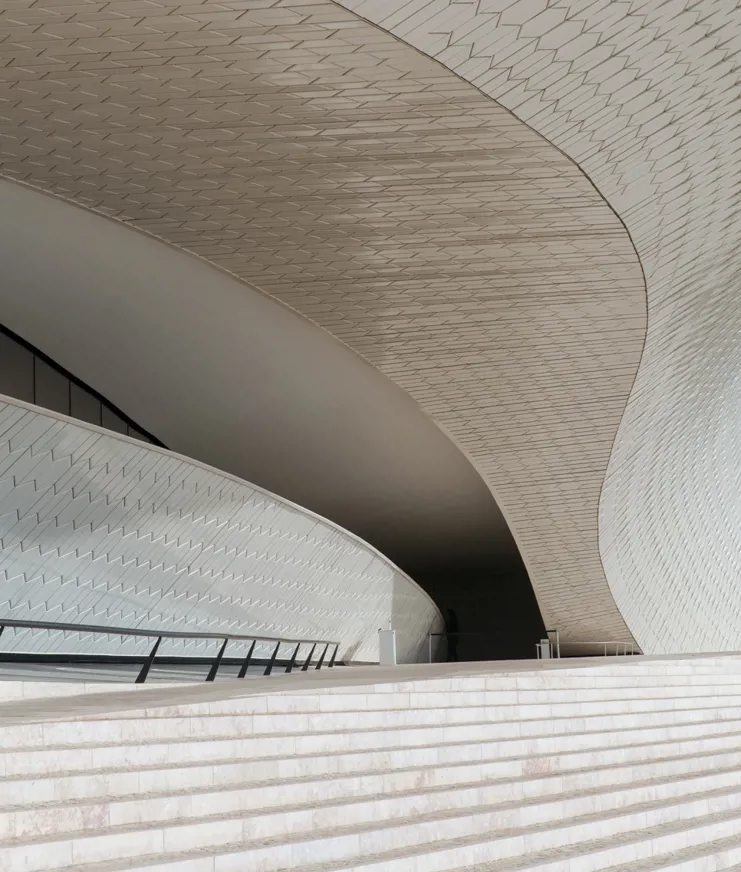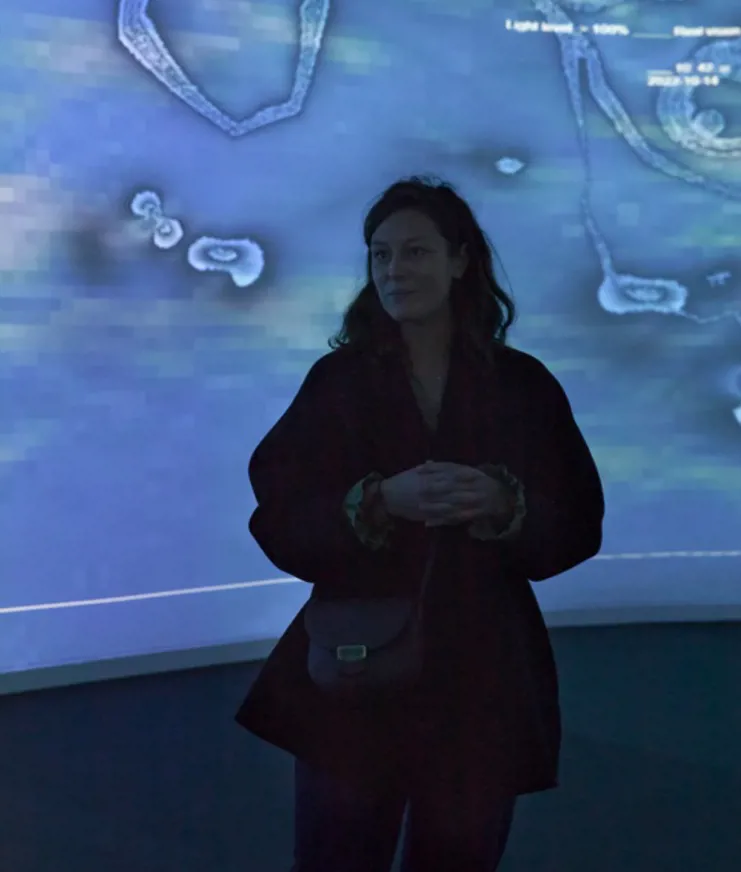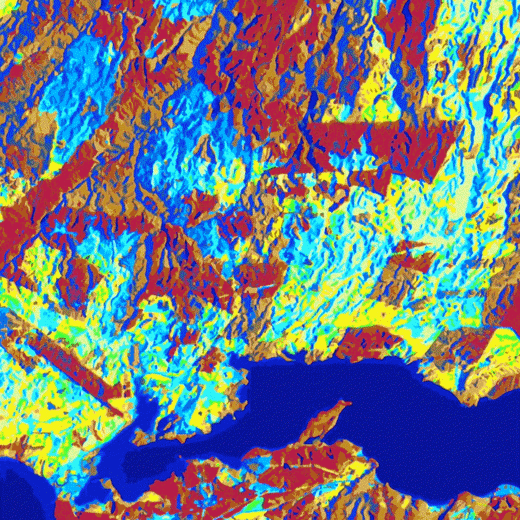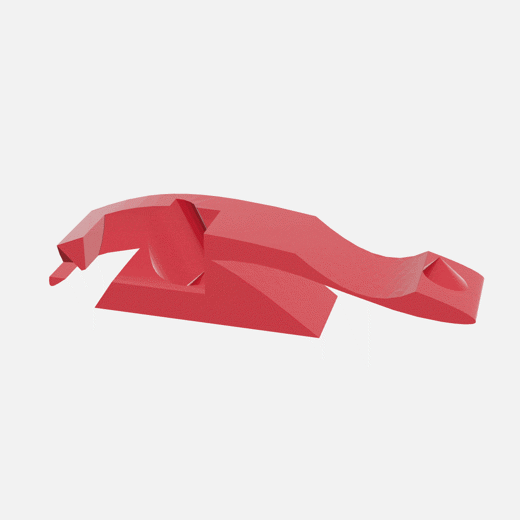Incubating future movements in travel and culture
Words Allison Reiber DiLiegroImages Sanda VuckovicVideo Eldon van Aswegen
Foessel is the founder of Artpool, a platform where art buyers can discover works curated by leading art professionals and purchase pieces as NFTs. A curator herself, Foessel originally launched the site as a social network for industry professionals but soon saw the opportunity to make the digital art space more accessible to all parties—artists, buyers, and curators—and seized it.
We met Foessel on a bright, windy day on on the riverfront doorstep of MAAT, Lisbon’s premier modern art museum. She led us inside and walked us through the exhibition CELESTE V3 by Solimán López, a Spanish artist who also sells his work on Artpool. Inside his gallery space, the walls were cast in a blue-gray glow, with nebulous, pixelated shapes shifting. We were watching projections of the sky over Lisbon and Valencia, taken via “beacons” equipped with video cameras and microcomputers and distributed in different parts of the world. She explained that a snapshot of each moment can be purchased as an NFT, like buying a piece of the sky as it once was. As an apropos end to the lesson, an NFT from the collection was dropped into our crypto wallets at day’s end.

MAAT is dedicated to fostering critical discourse and creative practices that inspire a new understanding of the present and engagement with the common future.

CELESTE V3 by Solimán López features projections of the sky over different parts of the world.

Pauline Foessel walks us through the exhibition. Snapshots of each moment can be purchased as NFTs on Artpool.
We sat down with Foessel in Lisbon to discuss why web3 is the future, how digital art can benefit buyers and creators, and why it’s essential to stay in touch with our physical world as technology tries to claim our attention.
How does Artpool work?
An artist creates an artwork, the curators write about the collection, and the buyer purchases the work as an NFT, which is a contract in the blockchain. An NFT is really a certificate of authenticity and ownership of a digital asset.
After 14 years in the physical art world, why did you decide to shift your focus to the digital art space?
I really started to work in the digital space 4 years ago. I went into this space because I think it can bring a much larger impact in the arts.
In the past, I worked in urban art and public art, giving art to as many people as possible in the streets. I see the digital space as an extension of this—we can touch so many more people. What we are doing with Artpool is finding a new digital revenue stream for the artist. But also finding a way to touch a new audience and sell more art to make everyone happier in this life.

Marcus Neustetter Perspectives of unknown territories

Issi_Issa RED STL
What do you say to the digital art skeptics?
Every day I have people doubting the whole NFT space. I also come from the physical art world so the first time I heard about NFTs, I was also pretty skeptical. I think the approach we have is simpler because creating an edition in the physical world is heavy. You need investment and you need logistics. You’re going to have, maybe, 100 prints that you have to pack, put in tubes, and ship. So it means a lot of people are not doing it. If we remove all of this, any artist can have a collection.
We understand the skepticism of NFTs and are using it as a tool to help people understand. The monetary value is in the JPG, but you can still leave with something and hang it on your wall. People get that so they are less skeptical.
Do you think digital art is the future?
I’ve never seen the digital space as something that is going to erase the physical space. It’s a wonderful complementary tool. I think you still need to go to a museum, walk in the streets, see street art, go to galleries. I think art can be everywhere.
And I believe in digital art as well, because we are using NFTs as a simple way to onboard more artists, museums, and art lovers. But you can also use the technology and push it to challenge the artist, which is really interesting.


Foessel is also co-director at Underdogs Gallery, a cultural space in Lisbon with a gallery and public arts program.
After being raised in the mountains of France and working in Shanghai, why did you choose Lisbon as your base?
It was really for the energy of the city. When you mount a start-up, you need time and headspace. And I think this is a country that offers this. It’s calm, and you don't have a lot of advertising as you’ll find in Hong Kong, London, and New York, where it’s a lot about consuming. Here you are pretty free, and I think that’s beautiful and necessary for my personality.
What do you see as the future of the tech industry?
I think that web3 will be everywhere, like how the web of today is Facebook, Instagram, and Google. It’s going to take time. I don't think this going to happen in a year—I think we are talking five to ten years. I think the more builders and creators there are in the space, the more tools there will be for people to get on board without any complexity.
We are still in a world where crypto is a bit of a grey area, but it will become mainstream. It’s going to be an entirely different paradigm, and I’m really optimistic. So how do you build something great that educates people and brings them in? I think that’s what we are doing. We are trying to make it easy for people to come in. Crypto is not a barrier: You can pay by credit card. Intangibility is not an issue: You get a tangible piece. We are taking these small concepts, adding them up, and educating people by doing workshops and sharing. That is how we are going to get there—that's what I believe.